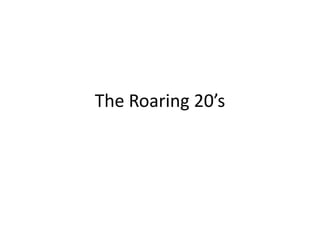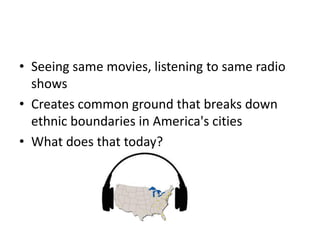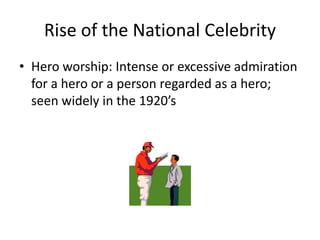This document provides an overview of several key themes and events of the 1920s in the United States. It discusses how the country became more isolationist after WWI. It also describes the Red Scare and fear of communism following the Russian Revolution. Additionally, it outlines the passage of restrictive immigration laws, the Great Migration of African Americans to northern cities, and the rise of the second Ku Klux Klan. The document also summarizes economic and cultural trends of the decade like the boom in automobile ownership, rise of mass media, and prohibition of alcohol.






































































